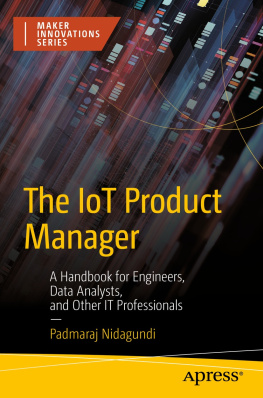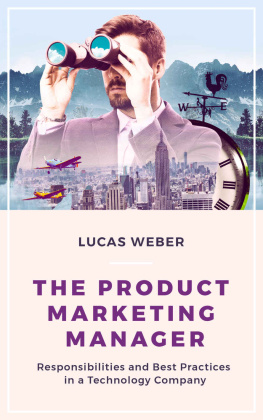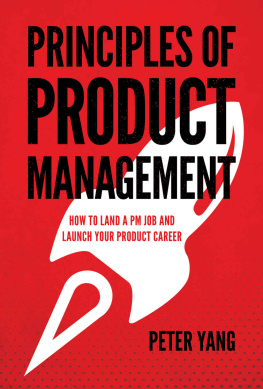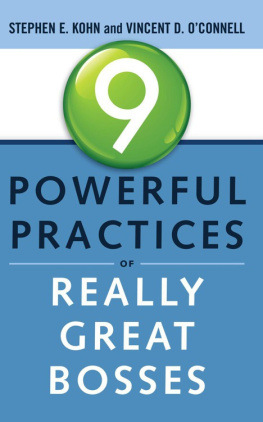Generic advice is impossible to put to work in the specifics of product management where real-time judgment calls are required. Jackie and Gayle provide context and frameworks that help future PM leaders to formulate their own conceptual models as they grow to successful product leaders.
More than product management 101 , this book will help even the most seasoned product manager be a more effective leader and decision-maker.
Amazing , practical advice to take control and navigate your product management career. I wish I had this book when I first embarked on my PM journey. A must-have guide!
Insider Advice on Landing a Job at Google, Microsoft, Apple, or Any Top Tech Company
To JamesI love you infinity
- Jackie
To Davis and Tobin and their zillions of questions
- Gayle
CRACKING
the
PM CAREER
The Skills, Frameworks, and Practices
To Become a Great Product Manager
Jackie Bavaro | Gayle Laakmann McDowell
CRACKING THE PM CAREER
Copyright 2021 by CareerCup.
All rights reserved. No part of this book may be reproduced in any form by any electronic or mechanical means, including information storage and retrieval systems, without permission in writing from the author or publisher, except by a reviewer who may quote brief passages in a review.
Published by CareerCup, LLC, Palo Alto, CA. Compiled January 22, 2021
For more information, or to enquire about bulk or university copies, contact support@careercup.com.
Please report bugs or issues at crackingthepmcareer.com .
Table of Contents
Part A: Foreword


Chapter 0
Foreword by Marissa Mayer
Foreword by Marissa Mayer
Product management is one of the most central and pivotal functions in modern technology companies. Ironically, the PM role is also one of the least well understood. What are the responsibilities of a PM? How do you measure their success? What skills are the most important in a product manager? What should you expect from an interview? What is the path for advancement? In Cracking the PM Career , Gayle McDowell and Jackie Bavaro do an excellent job detailing the PM role, the requirements, how to thrive and excel, and what to expect as you embark on a PM career.
I spent 13 years at Google, joining in 1999 as an early employee. The company grew and evolved considerably during my tenure there, and, in 2002, I was one of the founding members of the PM organization. In total, I spent just over a decade as a product manager and leader. From that first hand experience, I can say that product management is an interesting, varied, and challenging role. Every day is different, every product is unique, and every product managers approach and what they bring to the role is distinct. Further, the role of product manager varies considerably from company to company.
One of the most crucial skills required of a PM is managing through influence. Product managers rarely have management responsibilities over the engineers building the product. As a product manager, your responsibilities naturally flow to the product and managing to meet the market need. However, to meet the market need, you will need to convince the engineering teams to build the product, requiring you to use influence rather than authority. Each product manager will draw on their own toolsetpersuasiveness, supporting data, user studies, design principles, relationship buildingto achieve this. Managing through influence is one of the most important skills a product manager must develop and is also the most nuanced.
As I established Googles Associate Product Manager program, our vision was to hire new college graduates and train them to be great product managers in the specific way Google needed. That meant we needed to figure out which aspects of the role mattered most and how to support someone learning them. As Cracking the PM Career illustrates, the list of skills is long: communication, listening, organization, prioritization, studying users and markets, empathy, and so on.
In the APM program, we found that one of the best ways to learn these skills was to take raw talent (smart, strong technologists) and give them real hands-on experience, coupled with a lot of feedback and coaching. While all of the chapters of Cracking the PM Career are valuable and give depth of perspective, I suspect that many readers will find the Product Leader Q&As among the most helpful. These are real stories from well-respected product leaders in the trenches.
Cracking the PM Career acts as a roadmap to understanding product management and how to establish a successful career as a PM. I applaud Jackie (a Google APM alum) and Gayle in creating an in-depth manual to help those entering and mastering the field of product management.
Marissa Mayer is the co-founder and CEO of Sunshine, a consumer technology startup that makes daily mundane tasks effortless. Previously, she served as the CEO and President of Yahoo, which she led from 2012 to 2017. During her tenure at Yahoo, she transformed its culture, grew it to one billion users, hired more than 5,000 people, and oversaw nearly 50 acquisitions.
Prior to Yahoo, Marissa joined Google as an early employee and its first woman engineer. She helped to found the product management organization. As VP of Search Products and User Experience, she led the product management for Search, Maps, News and other consumer products. She also founded and led Google's Associate Product Manager program. Googles APM program, an elite rotational program which hires new college graduates and trains them as product managers, was the first of its kind in the industry.
The Product Manager Role


Chapter 1
Getting Started
Getting Started
Unicorns. I never thought that I'd be at this point in my career and trying to justify their existence, but PMing is funny that way. Sometimes your product needs a mythical beast. Or, at least I thought so.
Let me explain.
At Asana, we had a secret feature where users could turn on unicorn celebrations when they completed a task. Customers were delighted. Who wouldn't love a literal unicorn flying across their screen?
It turns out that the people who thought it was a virus weren't so crazy about the introduction of this possibly diseased beast. Also, it did seem a bit goofy for our business customers.
I was stuck. Logically, their points made sense. It could be jarring for our more serious users, and I could see where a less tech-savvy person might reasonably mistake our clip-art unicorn for a symptom of a computer issue.













